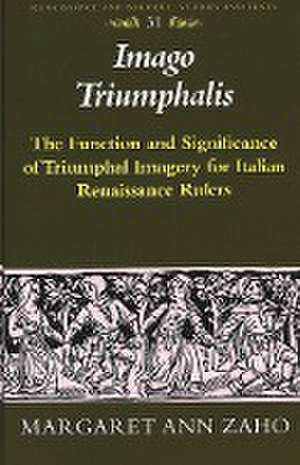Imago Triumphalis: Renaissance and Baroque Studies and Texts, cartea 31
Autor Margaret Ann Zahoen Limba Engleză Hardback – mar 2004
Preț: 497.16 lei
Preț vechi: 645.67 lei
-23% Nou
Puncte Express: 746
Preț estimativ în valută:
95.13€ • 99.32$ • 78.73£
95.13€ • 99.32$ • 78.73£
Carte tipărită la comandă
Livrare economică 04-18 aprilie
Preluare comenzi: 021 569.72.76
Specificații
ISBN-13: 9780820462356
ISBN-10: 0820462357
Pagini: 143
Ilustrații: 31 ill.
Dimensiuni: 236 x 161 x 15 mm
Greutate: 0.38 kg
Ediția:Nouă
Editura: Peter Lang Gmbh, Internationaler Verlag Der W
Seria Renaissance and Baroque Studies and Texts
ISBN-10: 0820462357
Pagini: 143
Ilustrații: 31 ill.
Dimensiuni: 236 x 161 x 15 mm
Greutate: 0.38 kg
Ediția:Nouă
Editura: Peter Lang Gmbh, Internationaler Verlag Der W
Seria Renaissance and Baroque Studies and Texts
Notă biografică
Margaret Ann Zaho earned her Ph.D. in Art History at the University of Washington. She has taught courses for the University of Washington in Seattle and Rome and for the Institute of Fine and Liberal Arts in Florence. She has served as a member of Ars et Fides, an association connected to the archdiocese in Florence, and has co-produced an independent film about Tuscan architecture. Dr. Zaho's current research interests include the use of Roman imperial iconography in Renaissance art and the importance of narrative fresco cycles as tools for moral and religious instruction.
Cuprins
List of Illustrations - Acknowledgments - Introduction - The History of the Roman Triumph - The Evolution of the Triumph in Literature and Art - The Personalization of the Antique Triumph - Malatesta and Montefeltro - Borso d'Este and the Eternal Triumph - Conclusion - Bibliography - Index.



